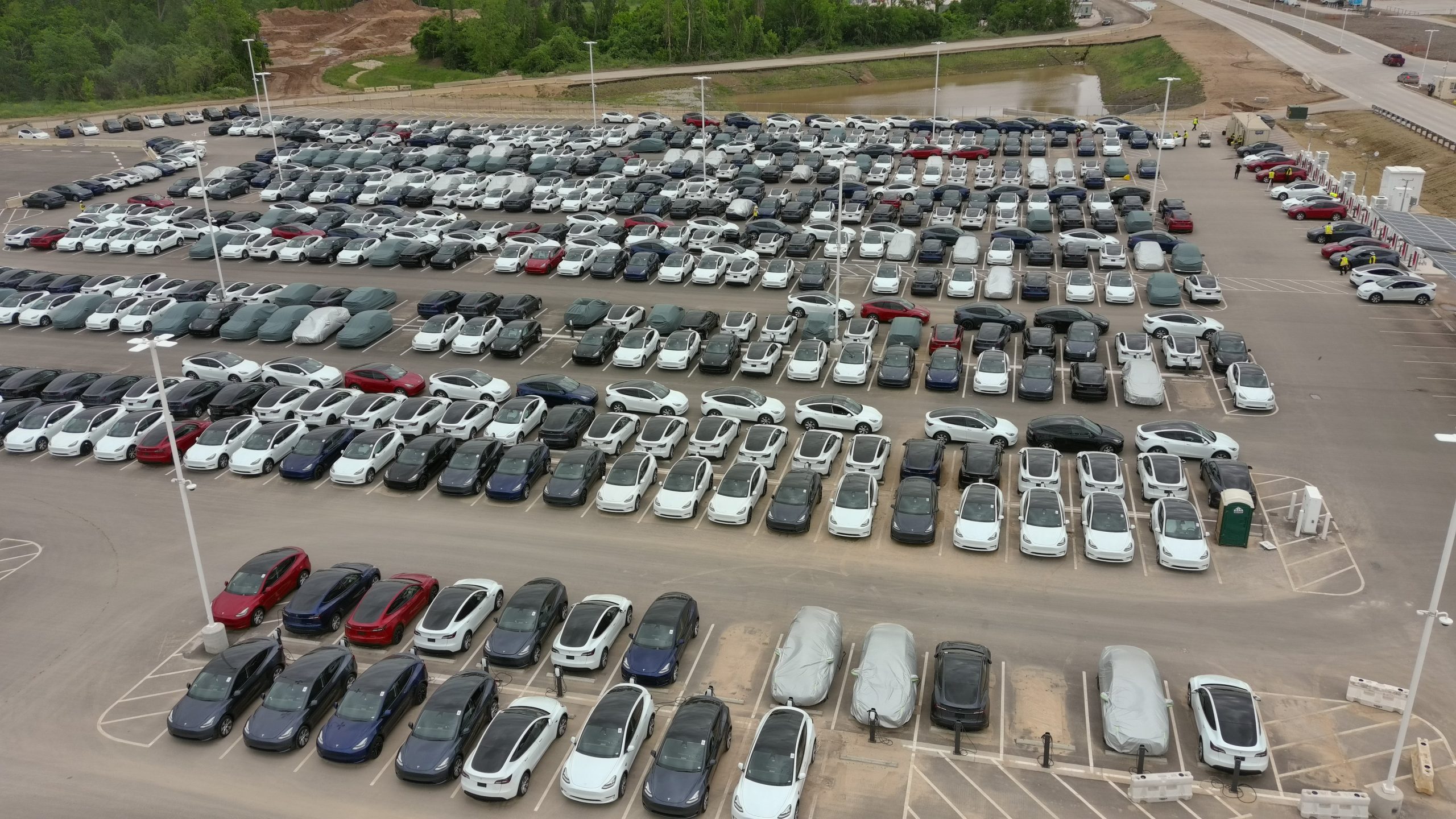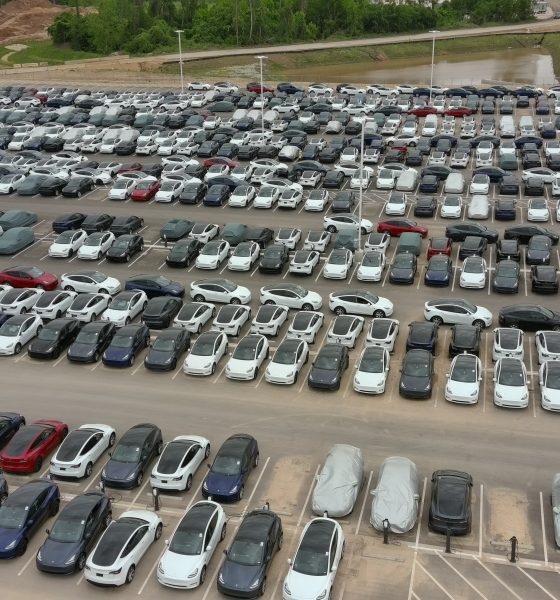Tesla has deployed a software update to a number of its Model S, X, and Y vehicles to fix a backup cam issue, as detailed in a recall notice shared by the U.S. National Highway Traffic Safety Administration (NHTSA) last week.
The NHTSA detailed the issue in a recall letter on Tuesday, noting that certain Model S, X, and Y vehicles with the Autopilot and Full Self-Driving (FSD) computer Hardware 4.0 (HW4) would not correctly display a rearview image while in reverse. The recall applies to 199,575 vehicles with the 2023 model year that are running software versions 2023.44.30 to 2023.44.30.6, according to the notice.
Tesla immediately shared a software update to fix the issue, and the letter says the NHTSA will mail owner notification letters on March 22. The NHTSA recall number for the problem is 24V-035, while the manufacturer recall number is SB-24-00-002. The report also says that Tesla introduced the software update version 2023.44.100.1 earlier this month, after assessing the condition of the affected vehicle and software versions.
The latest recall comes as many Tesla and electric vehicle (EV) owners have criticized the use of the term “recall” for issues that can be fixed with an immediate over-the-air (OTA) software update—rather than needing to be serviced by the OEM.
Last month, it was widely publicized that 2 million Tesla vehicles were involved in a recall due to issues with Autopilot’s Autosteer system not providing enough safety checks for drivers. In response, Tesla deployed software version 2023.44.30, which fixed the issues by increasing driver attentiveness monitoring measures and by making warning labels clearer.
Even Tesla CEO Elon Musk himself has commented on the use of the term recall in the past, last February calling it “anachronistic and just flat wrong” to use the word when referring to a software update.
Definitely. The word “recall” for an over-the-air software update is anachronistic and just flat wrong!
— Elon Musk (@elonmusk) February 16, 2023
Musk pointed out in 2022 that many of these issues haven’t caused any injuries, adding that the term was outdated and inaccurate. Most automakers in the industry are also following Tesla into offering software updates to their vehicles because of their convenience, and some of them have also faced recalls on easy OTA fixes.
Despite the criticism, the NHTSA currently still defines these kinds of issues as recalls, even if they don’t need to be physically serviced.
“NHTSA is empowered with robust tools and authorities to protect the public, to investigate potential safety issues, and to compel recalls when it finds evidence of noncompliance or an unreasonable risk to safety,” said an NHTSA spokesperson to Teslarati in an emailed response on whether the agency was considering new terminology for software-based recalls.
“Manufacturers are required to initiate a recall for any repair, including a software update, that remedies an unreasonable risk to safety. NHTSA recalls can include any required repair, which includes a software update, to remedy a potential safety risk. Manufacturers are also required to submit any communications to owners, dealers, and others about any software updates that address a defect, whether it is safety related or not.”
Updated 1/29/24: Added quote from the NHTSA.
Tesla advised by US Senators to recall vehicles over alleged suspension faults
What are your thoughts? Let me know at zach@teslarati.com, find me on X at @zacharyvisconti, or send your tips to us at tips@teslarati.com.

News
Tesla FSD fleet is nearing 7 billion total miles, including 2.5 billion city miles
As can be seen on Tesla’s official FSD webpage, vehicles equipped with the system have now navigated over 6.99 billion miles.

Tesla’s Full Self-Driving (Supervised) fleet is closing in on almost 7 billion total miles driven, as per data posted by the company on its official FSD webpage.
These figures hint at the massive scale of data fueling Tesla’s rapid FSD improvements, which have been quite notable as of late.
FSD mileage milestones
As can be seen on Tesla’s official FSD webpage, vehicles equipped with the system have now navigated over 6.99 billion miles. Tesla owner and avid FSD tester Whole Mars Catalog also shared a screenshot indicating that from the nearly 7 billion miles traveled by the FSD fleet, more than 2.5 billion miles were driven inside cities.
City miles are particularly valuable for complex urban scenarios like unprotected turns, pedestrian interactions, and traffic lights. This is also the difference-maker for FSD, as only complex solutions, such as Waymo’s self-driving taxis, operate similarly on inner-city streets. And even then, incidents such as the San Francisco blackouts have proven challenging for sensor-rich vehicles like Waymos.
Tesla’s data edge
Tesla has a number of advantages in the autonomous vehicle sector, one of which is the size of its fleet and the number of vehicles training FSD on real-world roads. Tesla’s nearly 7 billion FSD miles then allow the company to roll out updates that make its vehicles behave like they are being driven by experienced drivers, even if they are operating on their own.
So notable are Tesla’s improvements to FSD that NVIDIA Director of Robotics Jim Fan, after experiencing FSD v14, noted that the system is the first AI that passes what he described as a “Physical Turing Test.”
“Despite knowing exactly how robot learning works, I still find it magical watching the steering wheel turn by itself. First it feels surreal, next it becomes routine. Then, like the smartphone, taking it away actively hurts. This is how humanity gets rewired and glued to god-like technologies,” Fan wrote in a post on X.
News
Tesla starts showing how FSD will change lives in Europe
Local officials tested the system on narrow country roads and were impressed by FSD’s smooth, human-like driving, with some calling the service a game-changer for everyday life in areas that are far from urban centers.

Tesla has launched Europe’s first public shuttle service using Full Self-Driving (Supervised) in the rural Eifelkreis Bitburg-Prüm region of Germany, demonstrating how the technology can restore independence and mobility for people who struggle with limited transport options.
Local officials tested the system on narrow country roads and were impressed by FSD’s smooth, human-like driving, with some calling the service a game-changer for everyday life in areas that are far from urban centers.
Officials see real impact on rural residents
Arzfeld Mayor Johannes Kuhl and District Administrator Andreas Kruppert personally tested the Tesla shuttle service. This allowed them to see just how well FSD navigated winding lanes and rural roads confidently. Kruppert said, “Autonomous driving sounds like science fiction to many, but we simply see here that it works totally well in rural regions too.” Kuhl, for his part, also noted that FSD “feels like a very experienced driver.”
The pilot complements the area’s “Citizen Bus” program, which provides on-demand rides for elderly residents who can no longer drive themselves. Tesla Europe shared a video of a demonstration of the service, highlighting how FSD gives people their freedom back, even in places where public transport is not as prevalent.
What the Ministry for Economic Affairs and Transport says
Rhineland-Palatinate’s Minister Daniela Schmitt supported the project, praising the collaboration that made this “first of its kind in Europe” possible. As per the ministry, the rural rollout for the service shows FSD’s potential beyond major cities, and it delivers tangible benefits like grocery runs, doctor visits, and social connections for isolated residents.
“Reliable and flexible mobility is especially vital in rural areas. With the launch of a shuttle service using self-driving vehicles (FSD supervised) by Tesla in the Eifelkreis Bitburg-Prüm, an innovative pilot project is now getting underway that complements local community bus services. It is the first project of its kind in Europe.
“The result is a real gain for rural mobility: greater accessibility, more flexibility and tangible benefits for everyday life. A strong signal for innovation, cooperation and future-oriented mobility beyond urban centers,” the ministry wrote in a LinkedIn post.
News
Tesla China quietly posts Robotaxi-related job listing
Tesla China is currently seeking a Low Voltage Electrical Engineer to work on circuit board design for the company’s autonomous vehicles.

Tesla has posted a new job listing in Shanghai explicitly tied to its Robotaxi program, fueling speculation that the company is preparing to launch its dedicated autonomous ride-hailing service in China.
As noted in the listing, Tesla China is currently seeking a Low Voltage Electrical Engineer to work on circuit board design for the company’s autonomous vehicles.
Robotaxi-specific role
The listing, which was shared on social media platform X by industry watcher @tslaming, suggested that Tesla China is looking to fill the role urgently. The job listing itself specifically mentions that the person hired for the role will be working on the Low Voltage Hardware team, which would design the circuit boards that would serve as the nervous system of the Robotaxi.
Key tasks for the role, as indicated in the job listing, include collaboration with PCB layout, firmware, mechanical, program management, and validation teams, among other responsibilities. The role is based in Shanghai.
China Robotaxi launch
China represents a massive potential market for robotaxis, with its dense urban centers and supportive policies in select cities. Tesla has limited permission to roll out FSD in the country, though despite this, its vehicles have been hailed as among the best in the market when it comes to autonomous features. So far, at least, it appears that China supports Tesla’s FSD and Robotaxi rollout.
This was hinted at in November, when Tesla brought the Cybercab to the 8th China International Import Expo (CIIE) in Shanghai, marking the first time that the autonomous two-seater was brought to the Asia-Pacific region. The vehicle, despite not having a release date in China, received a significant amount of interest among the event’s attendees.










